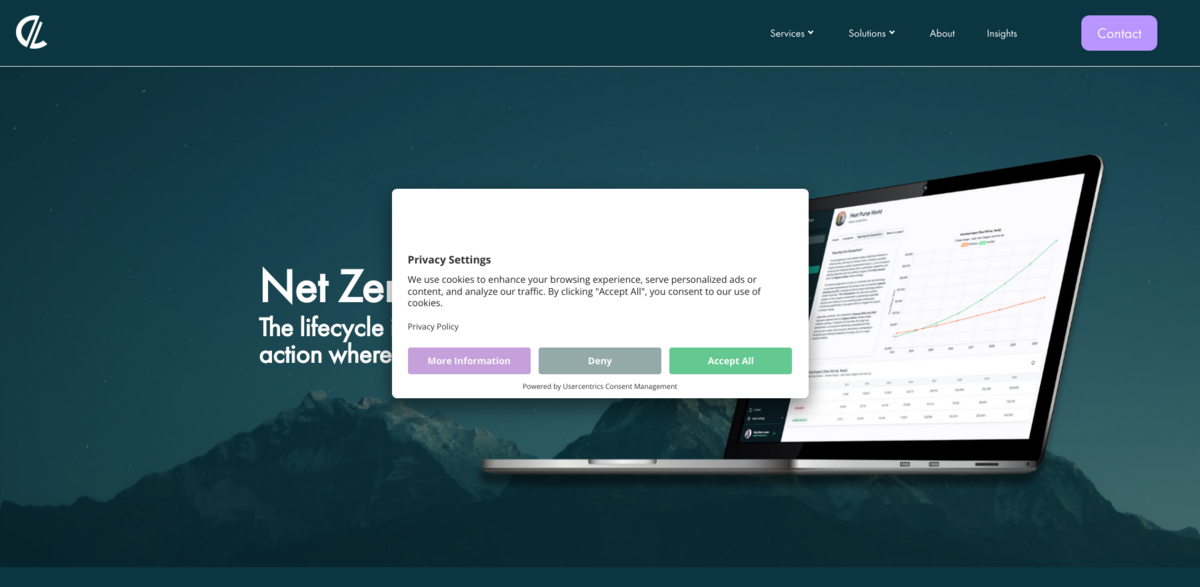What is ClimatePoint?
ClimatePoint is a lifecycle impact platform designed to drive action where it truly matters. The world needs to cut 500 gigatons of emissions to limit global warming to 1.5°C, and the only way to succeed is with a forward-looking plan. That’s exactly why ClimatePoint was built. By leveraging Life Cycle Assessment (LCA) and Scope 4 avoided emissions, it unlocks real strategy and forecasts the change for tomorrow. It’s about making net zero not just a goal, but a possible reality.
The Main Benefit of Using ClimatePoint
ClimatePoint offers clear, measurable benefits for companies and investors alike. Here are some key figures and facts:
- Cutting 500 gigatons is essential to limit warming to 1.5°C.
- Supports Product Environmental Footprint (PEF) and Environmental Product Declaration (EPD) compliance for companies.
- Helps investors showcase realized and future impacts of their portfolios.
- Integrates with SFDR reporting, including Principle Adverse Impacts, EU Taxonomy, and Article 8/9 compliance.
- Focuses on forward-looking strategies through lifecycle assessments and avoided emissions.
How ClimatePoint Supports Companies
For companies, proving impact is crucial. ClimatePoint helps communicate value clearly to investors and clients. It provides data that can be applied to reporting and compliance criteria such as Product Environmental Footprint (PEF) and Environmental Product Declaration (EPD). This means companies can not only track their carbon footprint but also align with global climate goals and regulatory frameworks. It’s about transparency, trust, and taking real action.
Why Investors Should Care
Investors get to tell their gigaton story with ClimatePoint. It’s not just about bragging rights—though that’s part of it—it’s about integrating outcomes with Sustainable Finance Disclosure Regulation (SFDR) reporting. This includes Principle Adverse Impacts, EU Taxonomy, and Article 8/9 compliance. Essentially, it helps investors demonstrate the realized and future impacts of their investment portfolios, making sustainability a core part of financial decision-making.
Understanding Carbon Footprint of Products (CFP)
So, what exactly is a product’s carbon footprint? CFP measures the total greenhouse gas emissions linked to a product’s entire life cycle, expressed in CO₂ equivalents. This covers everything from raw material extraction, production, transportation, usage, to disposal. It’s a focused look at greenhouse gases, different from broader Life Cycle Assessment (LCA) or Product Environmental Footprint (PEF), which include multiple environmental indicators.
ClimatePoint’s Impact on Sustainable Development Goals (SDGs)
- SDG 7: Affordable and Clean Energy
- SDG 9: Industry, Innovation, and Infrastructure
- SDG 12: Responsible Consumption and Production
- SDG 13: Climate Action
- SDG 17: Partnerships for the Goals
When to Measure and Reduce Your Product’s Carbon Footprint
Timing matters. Measuring a product’s carbon footprint is most effective at key stages: during the design phase to build sustainability in from the start, at market launch to validate claims and ensure regulatory alignment, and during stakeholder reporting to provide verifiable data for compliance and communication. Ready to measure and reduce? Experts are available to guide the way.





















